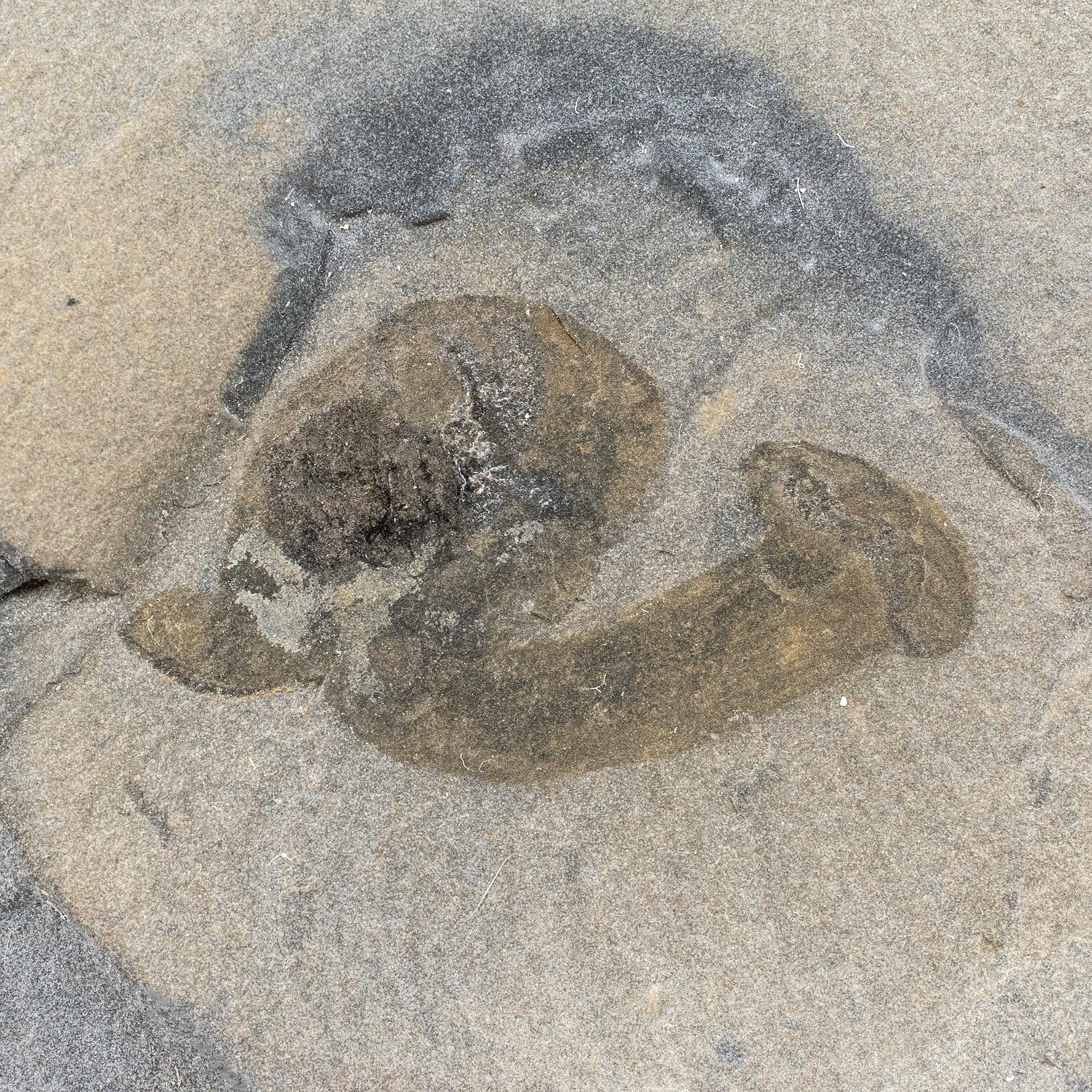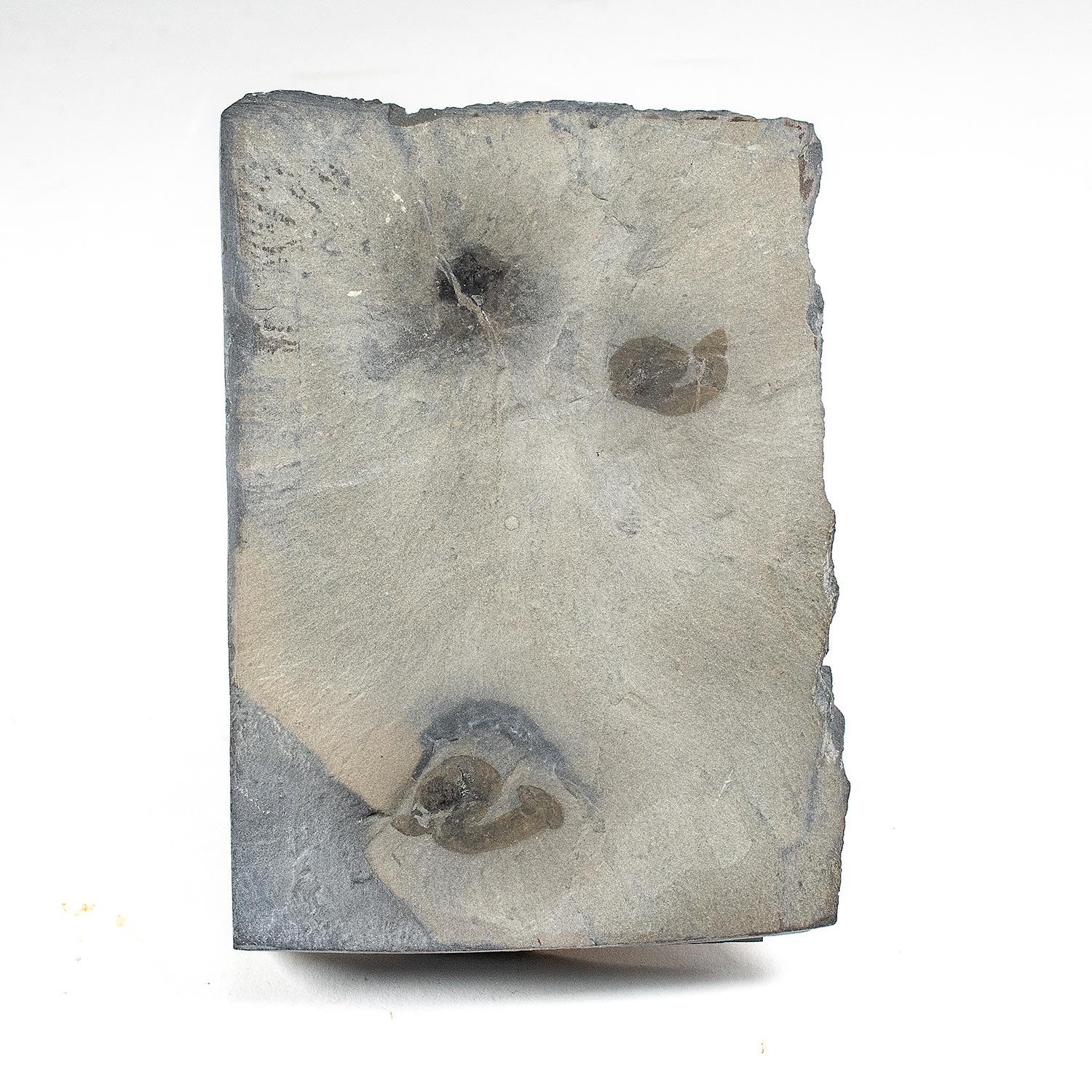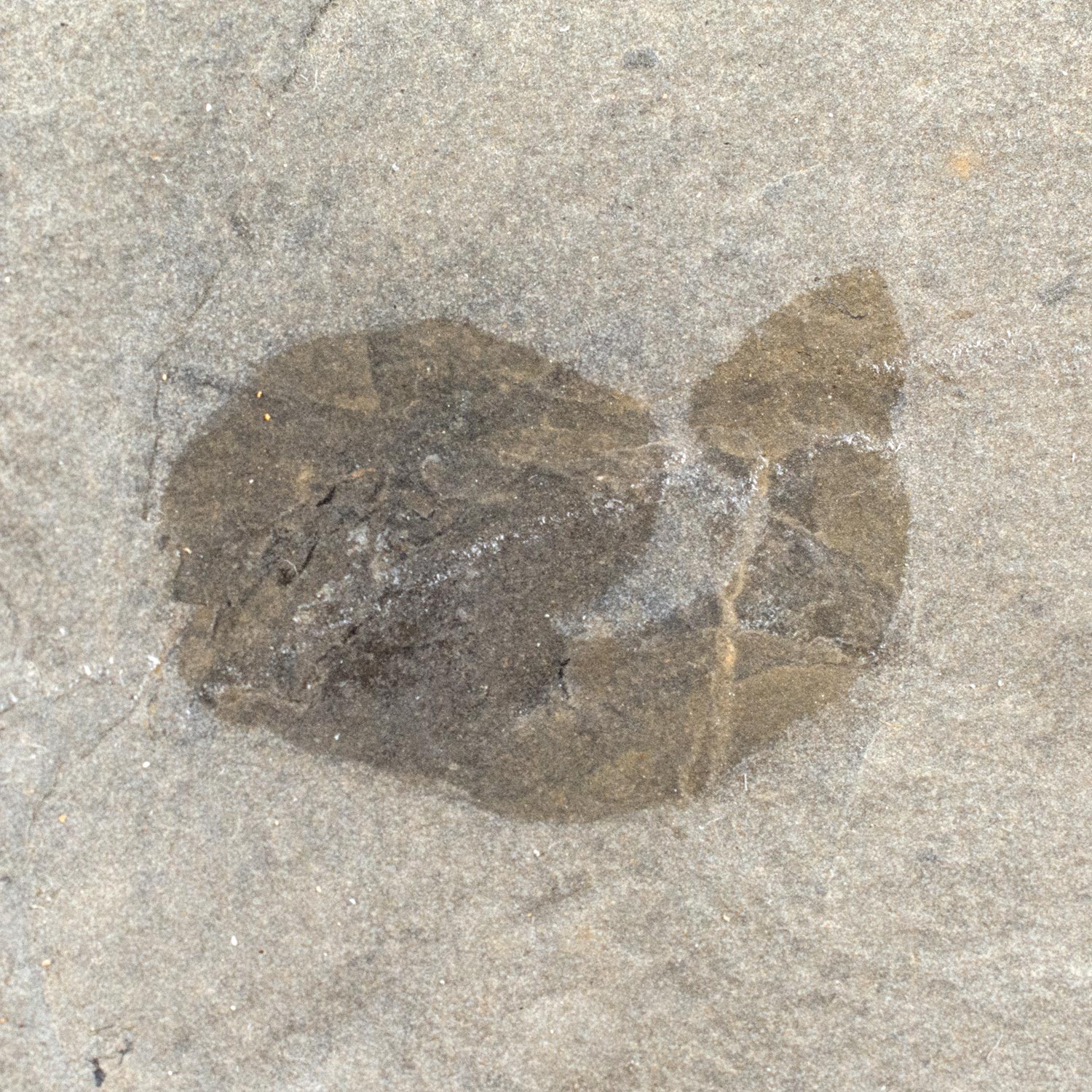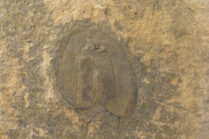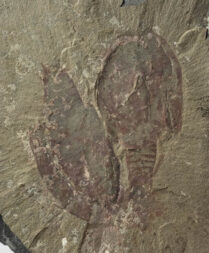Description
Priscansermarinus barnetti
Middle Cambrian
Burgess Shale, Stephens Formation
Field, British Columbia
Canada
Three, 21mm, 28mm and 16mm on 109mm x 78mm slab.
Discovered in 1975, Priscansermarinus was originally described as a type of barnacle, but this determination was almost immediately challenged. Still pending restudy, many experts on the Burgess Shale have argued it is more likely a tunicate-like animal similar to Phlogites, Shankouclava or Cheungkongella from the early Cambrian Chengjiang Fauna. Tunicates are a member of the Chordata, the phylum to which all vertebrate animals, including ourselves, belong to.
This is an extremely rare species. This is the only example we have ever had.
See: Shankouclava
Also: Cheungkongella
And what is a tunicate you ask? Wikipedia has the answers: Tunicate

